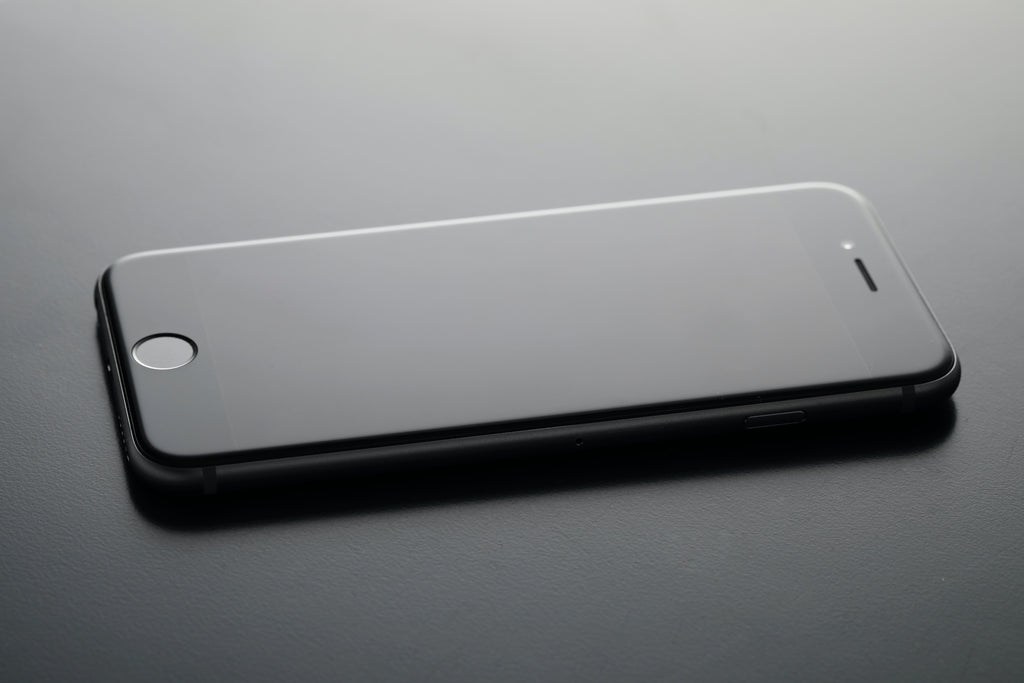A Comprehensive Guide on How to Take Out a SIM Card
Table of Contents
- Why You May Need to Remove a SIM Card
- Upgrading Your Phone
- Changing Carriers
- Troubleshooting Issues
- Temporary SIM Swaps
- Device Maintenance
- Gather the Necessary Tools
- Power Off Your Device
- Locate the SIM Card Tray
Ah, the humble SIM card – that tiny piece of technology that keeps us all connected. But wait, why on earth would you need to remove it? Isn't it meant to stay snug in your phone forever, like a coveted treasure in a chest? Well, not quite.
Why You May Need to Remove a SIM Card
Upgrading Your Phone
Picture this: You're in the mood for a shiny new smartphone. You've done your research, saved up, and finally got your hands on the latest and greatest. But there's a tiny problem – it doesn't quite fit your current SIM card slot. That's where the art of SIM card removal comes into play. You'll need to swap your old SIM card into the new device to keep your number and data.
Changing Carriers
Life's all about choices, right? Sometimes, you decide that your current mobile carrier just isn't cutting it for you. Maybe their coverage is patchy, or their data plans are sky-high. So, you decide to make the switch to a new carrier with greener pastures. To do that, you'll need to remove your old SIM card and replace it with the shiny new one provided by your new carrier.
Troubleshooting Issues
Technology can be a bit finicky at times. If you're experiencing issues with your mobile network – dropped calls, no signal, or strange error messages – your friendly SIM card might be the culprit. In such cases, taking out the SIM card and giving it a little TLC (tender loving care) can help resolve the problem.
Temporary SIM Swaps
Here's a scenario: You're globetrotting, exploring new corners of the world, and you decide to grab a local SIM card for cheaper data and calls. Or perhaps you're on a business trip and using a company-provided SIM card. In these cases, you'll need to know how to gracefully switch between your regular SIM and the temporary one without causing a technological mishap.
Device Maintenance
Just like everything else in life, even your SIM card needs a breather once in a while. Removing it can be a part of routine maintenance – cleaning the contacts, ensuring it's free of dust and debris, and giving your trusty SIM a moment to stretch its metaphorical legs.
Gather the Necessary Tools
Before we embark on our journey of SIM card liberation, let's make sure we're well-equipped. You wouldn't want to be caught in the middle of this operation without the right tools, would you? Here's what you'll need:
1. SIM Card Ejector Tool
This is the Rolls-Royce of SIM card removal tools. Most smartphones come with a small, metal or plastic ejector tool that's designed specifically for the task. It usually looks like a tiny pin with a rounded end. If you've got one of these, consider yourself lucky – you're all set. If not, don't worry; we have a few alternatives up our sleeve.
2. Paperclip
Ah, the trusty paperclip – a staple of offices everywhere. In a pinch, a straightened paperclip can serve as a makeshift SIM card ejector. Just make sure it's thin enough to fit into the SIM card tray's pinhole. If you're reading this at work, you might just have a secret agent of SIM card removal right in your drawer.
3. Safety Pin
If you're looking for something even more fine-tipped than a paperclip, a safety pin is your go-to. Its slender profile makes it perfect for the delicate operation of SIM card removal. Just like with the paperclip, ensure it's straightened out before you begin.
4. Fingernail (Only for the Brave)
If you've got strong, nimble fingers and aren't squeamish about using your nails as a tool, you can give this a shot. However, I must warn you – it's a bit trickier, and you'll need to exercise extra caution not to damage your nails or the SIM card tray.
Power Off Your Device
Alright, you've got your trusty SIM card ejector tool (or an alternative), and you're ready to roll. But before we get to the exciting part, let's take a moment to power down your device. This step is crucial for a couple of reasons:
Prevent Data Loss
First and foremost, turning off your device before removing the SIM card prevents data loss and potential damage to your SIM card. Think of it as giving your phone a well-deserved nap – it helps it relax and ensures no important data gets jumbled in the process.
Avoid Potential Damage
Have you ever tried working on a moving target? Probably not, because it's not the best idea. Removing a SIM card while your phone is still powered on is like trying to change a tire on a moving car – it's risky, and things could go awry. By powering off your device, you ensure a stable and controlled environment for the SIM card extraction mission.
Now, here's how you can power off your device, step by step:
-
Locate the power button on your device. It's typically found on the side or top of your phone.
-
Press and hold the power button until a menu appears on your screen. This menu will usually give you the option to power off your device.
-
Tap on the "Power Off" or "Shut Down" option, and confirm your choice if prompted.
-
Wait patiently as your device gracefully shuts down. You'll usually see a screen with a spinning or blinking logo, indicating that it's turning off.
-
Once your device is completely powered down, you're ready to move on to the next step – locating the SIM card tray.
Thanks for visiting our blog, are you planing to travel to the US? Check out our USA SIM card or our eSIM USA before you take off.
Locate the SIM Card Tray
Now that your device is powered down and you're all set with your SIM card ejector tool (or alternative), it's time to find the elusive SIM card tray. This tiny compartment holds the key to your mobile connectivity, and its location can vary depending on your device's make and model.

SIM Card Tray Locations
Let's dive into the different places you might find this little compartment on popular device brands:
iPhones
- For most iPhone models, the SIM card tray is located on the right side of the device. Look for a small, recessed pinhole.
- On older iPhone models (iPhone 4 and earlier), the SIM card tray is on the top edge of the device.
Samsung Galaxy
- On many Samsung Galaxy devices, the SIM card tray is usually on the upper edge of the phone, next to the headphone jack.
- Some Samsung models have the SIM card tray on the left side of the phone.
Google Pixel
- Google Pixel devices often have the SIM card tray on the left side of the phone.
- Be sure to check the top edge as well, as some models may have it there.
Other Android Phones
- For many other Android smartphones, the SIM card tray is commonly located on the upper edge of the device.
Tablets
- On tablets, the SIM card tray placement varies widely. It's commonly found on the sides or top, similar to smartphones.
To locate your specific device's SIM card tray, you may refer to your device's manual or check the manufacturer's website for detailed instructions. Alternatively, you can search online for your device's model along with "SIM card tray location" to find visual guides and videos.
Use the Ejector Tool
You've pinpointed the location of your SIM card tray, and you've got your SIM card ejector tool (or clever alternative) in hand. Now, it's time to gracefully release that SIM card from its cozy abode. Follow these steps carefully to ensure a smooth SIM card extraction:
-
Identify the Pinhole: Examine your device's SIM card tray closely. You should notice a tiny pinhole near it. This pinhole is where your SIM card ejector tool will work its magic.
-
Insert the Ejector Tool: Take the pointed end of your ejector tool and gently insert it into the pinhole. You should feel a slight resistance, but don't worry; it's just the SIM card tray locking mechanism doing its job.
-
Apply Gentle Pressure: Once the tool is inserted, apply a small amount of pressure. This will activate the mechanism, causing the SIM card tray to pop out slightly. Remember, we're talking about gentle pressure here – no need to Hulk-smash it.
-
Remove the SIM Card Tray: With the SIM card tray popped out, carefully pull it all the way out of your device. Be cautious not to let it snap out too quickly, as it could lead to the SIM card or tray getting damaged.
-
Retrieve the SIM Card: Once the tray is fully extended, you'll see your SIM card resting there. Gently remove the SIM card from the tray by sliding it out. Handle it with care, avoiding contact with metal contacts and fingerprints.
-
Inspect the SIM Card: Take a moment to inspect your SIM card for any visible damage or debris. If everything looks clean and intact, you're good to go.
-
Replace the SIM Card Tray (If Needed): If you're planning to put your SIM card back into the same device, make sure the tray is empty and align the SIM card properly. Slide the tray back into its slot until it's snugly in place.
That's it! You've successfully removed your SIM card from its slot. But remember, this little chip holds your precious data and connectivity, so treat it like the VIP it is.
Handling SIM Cards Properly
So, you've removed your SIM card with finesse, but your journey doesn't end here. It's crucial to handle your SIM card with the utmost care to ensure its longevity and optimal performance. Here are some handy tips:
1. Keep It Clean
- Your SIM card's metal contacts are sensitive. Ensure they remain free of dust, dirt, and fingerprints. A gentle wipe with a soft, lint-free cloth is all you need if it gets dirty.
2. Avoid Extreme Temperatures
- SIM cards aren't fans of extreme temperatures – neither freezing cold nor scorching heat. Keep them in a temperate environment to prevent potential damage.
3. Stay Away from Liquids
- Liquids and electronics are rarely good pals. Keep your SIM card dry, and never insert it into your device if it's wet.
4. Steer Clear of Magnets
- Magnets can wreak havoc on the data stored on your SIM card. Avoid exposing it to strong magnetic fields.
5. Use Storage Accessories
- If you're not using your SIM card right away, consider storing it in a protective case or a SIM card holder. These accessories help safeguard it from harm.
6. Swap with Caution
- If you're swapping SIM cards between devices, ensure the new device is compatible with your SIM card's size and technology (e.g., micro SIM, nano SIM). Consult your carrier or manufacturer if you're uncertain.
By following these guidelines, you'll keep your SIM card in tiptop shape, ready to facilitate your digital adventures wherever they may take you. Before you take off make sure to check with local government of the travel status.
Frequently Asked Questions (FAQs)
Can I remove a SIM card without a SIM card ejector tool?
Absolutely! While a SIM card ejector tool is the ideal choice for this task, you're not out of options if you don't have one. A paperclip, safety pin, or even your fingernail can serve as a makeshift tool. Simply ensure that whatever you use is slender enough to fit into the pinhole next to the SIM card tray. Apply gentle pressure, and you'll achieve SIM card freedom in no time.
Can removing a SIM card cause data loss?
Not if you do it right. Powering off your device before removing the SIM card is the key to preventing data loss. This ensures that your device is in a stable state, and no ongoing data operations are interrupted. Just remember to handle your SIM card with care to avoid any mishaps.
What should I do if my SIM card gets stuck in the tray?
Fear not – this happens to the best of us. If your SIM card gets stuck in the tray, resist the urge to yank it out forcefully. Instead, gently wiggle the tray while applying light pressure to ease the SIM card out. Patience is your ally in this situation. If it's still stubborn, consider seeking assistance from a professional technician.
Is it safe to switch SIM cards between different devices?
Yes, it's generally safe to switch SIM cards between devices as long as they're compatible. Different devices may use various SIM card sizes (e.g., micro SIM, nano SIM), so ensure your SIM card fits the new device's slot. Additionally, consult your carrier or manufacturer for guidance on compatibility and any necessary settings adjustments.
How do I dispose of an old SIM card?
When it's time to part ways with an old SIM card, it's essential to do so responsibly. SIM cards contain personal information, so it's best to take a few precautions: For security, use scissors to cut through the SIM card's metal contacts. Dispose of the cut-up SIM card in a secure manner to protect your data. Many electronic recycling centers accept old SIM cards. Check with your local recycling facilities for proper disposal options.









